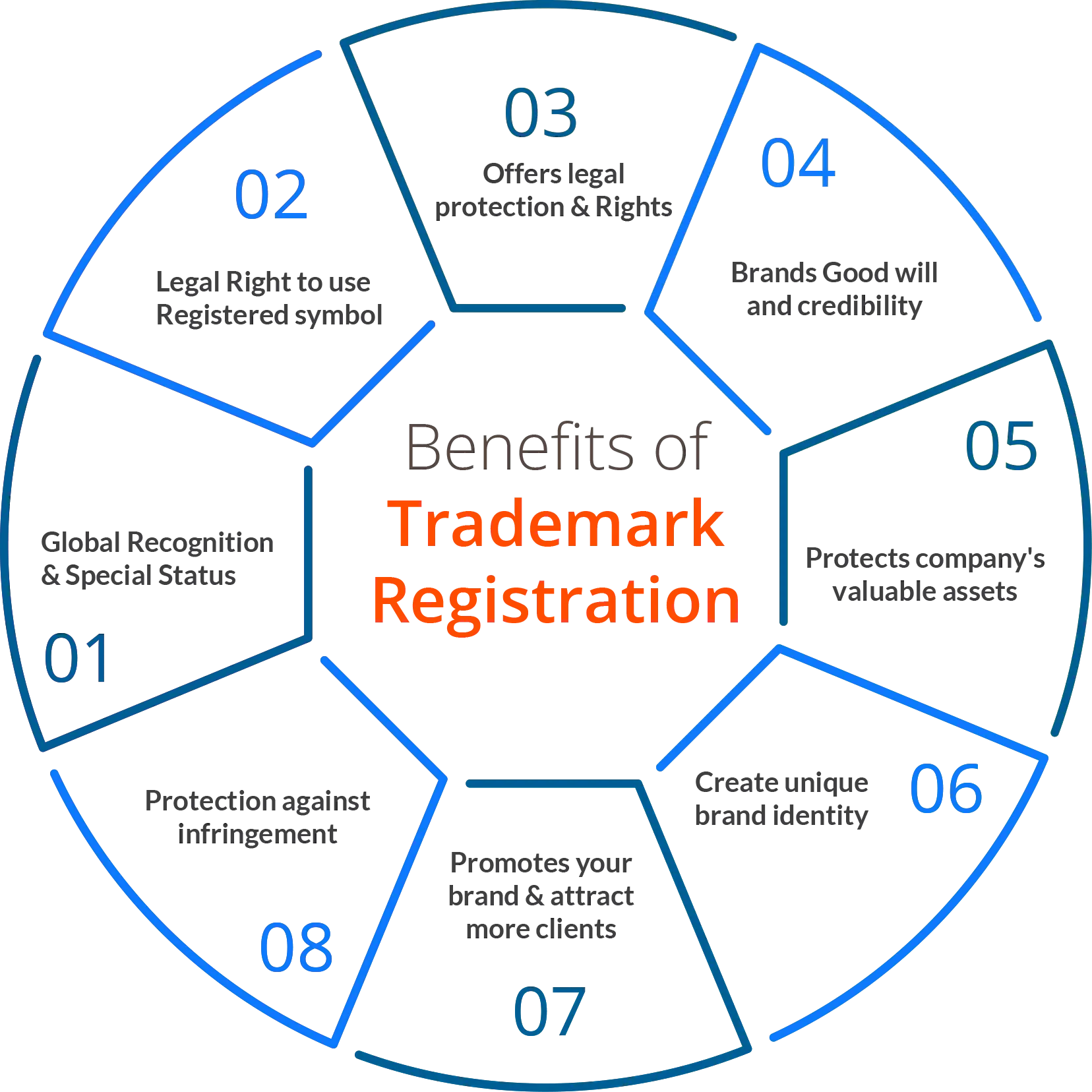Running your own business always comes with the uncertainty that someone might use your name or logo. This can lead to erosion of the customer base as another unauthorized person uses your goodwill for their gains. It takes years to build a good reputation and brand. Further, customers identify your business because of your brand name, logo, and the goodwill you built over the years. It is important to protect the same using trademark registration. That is what makes trademarks one of the most important intellectual property rights.
Let's Understand Everything About Trademark and How You Can Register Trade Mark in India
What is Trademark?
A trademark is a word, phrase, design, symbol, or a combination of these that identifies your goods and services. It is the basis that helps customers distinguish your business from your customers. A trademark basically distinguishes your offerings from those of your competitors. Therefore, it is important to get a trademark registered for your goods, services, or brand. But what is the procedure for trademark registration India? Let’s find out!
Trade Mark Registration Online in India
Following is the step-by-step process for trademark registration in India:
- Decide on Trademark: You need to decide what thing you want to trademark. Is it the word, symbol, tagline, device, etc? However, you need to ensure that whatever you decide is not being used by any other business.
- Decide on the Colour Logo or B&W Logo: Your logo will create a visual image of the brand in your customer’s mind. Therefore, think carefully while deciding on your logo. Further, the color combination is also an important factor when deciding on your logo. When it comes to trademark registration for the logo, the following are the two options available to you:
- You can trademark a coloured logo. In such a case, once you obtain the trademark, you won’t be able to change the colour pattern because you trademark both the logo pattern and colour combination.
- You can also go for B&W or Black & White logo trademark. In such a case, the trademark only protects the logo pattern and not the colour. Therefore, you are free to choose any colour of your choice on your trademarked logo. Here’s a fun fact: You can trademark colours as well!
- Check the Availability of the Trademark: Check the availability of the trademark. You can check the same from the ipindia portal. In case you find that a similar symbol, name, wordmark etc. is already being registered or applied for, then you will find difficulty in obtaining your trademark registration. Determine the class under which your business falls and then check the availability of your trademark. Trademark protects your name or logo only in the class under which it is being applied for.
- Provide the User Date: If you have been using the brand name or logo for a while, mention it while furnishing the application. This is because the trademark is usually granted to the applicant who started using the name or logo first instead of first come first serve basis. Therefore, you can get the trademark registered if you started using it first.
- Apply for the Trademark: Once you finalise the above, you shall make the application for trade mark registration online. You shall make the trademark application in Form TM-A through the official ipindia website. The application shall be accompanied by all the relevant documents.
- Evaluation of Application: Once you submit the application, the government authority will examine the application. The examiner will examine the application to decide whether it conforms to the Trademarks Act, of 2016. The examination report shall be issued by the trademark authority within 30 days of filing the application which may or may not include any objections. The applicant shall submit the response and provide the necessary documents against the objections raised, if any.
- Evaluation of Reply: If the examiner is not satisfied with the submission of the reply and documents furnished therein, then he may schedule a hearing. After the hearing, the examiner shall decide whether to accept the trademark and send it for publishing in the journal or reject the trademark if the objections still persist.
- Trademark Advertisement: If the trademark registration is being proceeded from the previous stage, then it should be advertised for 4 months and should be published in the trademarks journal. It invites public opposition to ensure that the public does not have any objection to the trademark registration of the applicant.
- Public Opposition: Any person who feels wronged after the trademark is published or promoted in a journal may submit a notification for opposing the trademark registration. The opposition notification should be submitted in Form TM-O within 4 months of the trademark’s publication in the trademark journal. After an objection, a proper legal procedure should be followed including submission of a counter application, providing proof and scheduling and holding a hearing for trademark registration.
- Trademark Registration: In case there is no objection or the objection is resolved, then trademark registration may be approved. It is the last step of the trademark registration process. After getting registered, the trademark shall be valid for a period of 10 years after which it should be renewed.

Documents Required for Trademark Registration Process
Documents required for trademark registration vary as per your constitution format. The following is the document checklist for trademark registration:
- Individuals & Sole Proprietors
- Copy of the logo, wordmark, device etc. for which the trademark needs to be obtained
- Signed Form-48 (in case of trademark attorney)
- ID proof of the individual or sole proprietor
- Address proof of the individual or sole proprietor
- Partnership Firms / LLP / Company
- Copy of the logo, wordmark, device etc. for which the trademark needs to be obtained
- Signed Form-48 (in case of trademark attorney)
- UDYAM registration certificate
- Partnership deed or certificate of incorporation
- ID proof of the firm or company
- ID proof of the authorized signatory
- Address proof of the authorized signatory
Following were the complete details regarding trademark certificate in India. In case you need any assistance with respect to trademark registration online, feel free to contact the ASC Group.
Frequently Asked Questions
Q
When should the trademark renewal application be filed?
A
A registered trademark is valid for 10 years after which it shall be renewed. The application for renewal of the trademark should be filed in Form TM-R. The application for renewal can be filed within 1 year before the expiry of the trademark.
Q
What are the things that can be trademarked in a business?
A
Trademarks are not just limited to names, logos and symbols. You can obtain a trademark for words, logos, symbols, product names, business names, name of a person, surnames, taglines, sound marks, motion marks, scent marks, shapes, packaging etc.
Q
What can we do if someone tries to infringe our trademark?
A
In case your trademark is being infringed, then you can file either a civil or criminal lawsuit against the person who is trying to infringe your trademark. Before proceeding to file the lawsuit, you can send a cease-and-desist notice with your demands to stop the violator from infringing your trademark. This will help avoid unnecessary legal procedures.




























































Leave a Reply
Your email address will not be published. Required fields are marked *